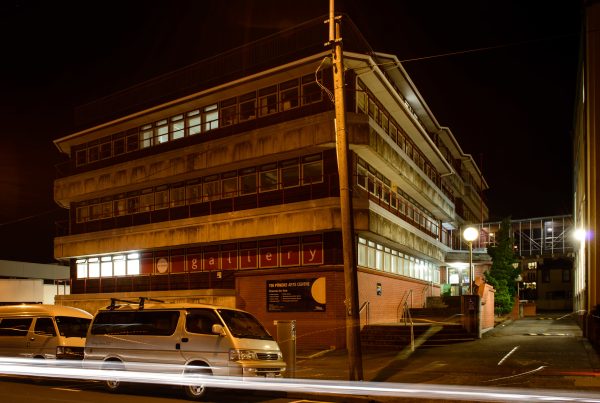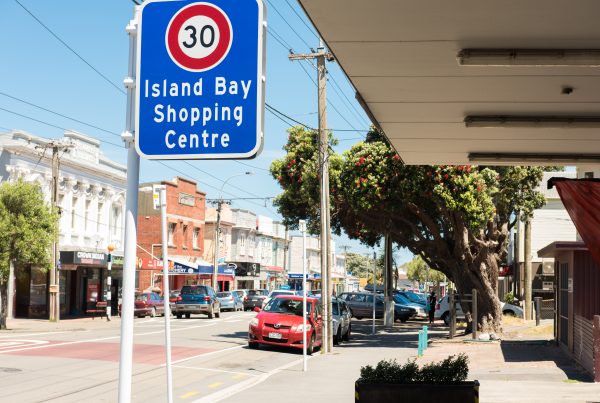
This story is just one among thousands that suggest all is not well with Wellington’s healthcare system. Official figures show that a third of residents — more than 80,000 people — are unable to get the healthcare they need. That’s the worst record of any of New Zealand’s major centres. Many people either can’t afford the cost of a visit to a health clinic or simply can’t get in front of a doctor. And the health centres serving the poorest areas are either struggling to maintain services in the face of severe funding cuts or raising visit fees. Unsurprisingly, the number of people unnecessarily turning up to hospital A&E departments is rising. How, some are asking, has this happened, and why isn’t more being done about it?
One of those sounding the alarm the loudest is Don Matheson, a professor of public health at Massey University. Many of Wellington’s health problems, he argues, stem from officials not getting the balance right between the different parts of the sector. In health, an important distinction is drawn between primary care, which includes things like health centres and GP clinics, and secondary care, which involves the complex operations that take place in major hospitals. While both kinds of care matter, experts like Matheson argue for a greater stress on primary care, for two reasons.
The first is about equity: primary care makes the biggest difference to the region’s most deprived communities — which tend to be found in places like Newtown, parts of Lower Hutt and eastern Porirua — because the diseases of poverty are very often best treated by GPs. The second reason is about efficiency: primary care is often the most efficient way to treat patients, given that it is far cheaper to provide a GP appointment than to have someone turning up in A&E.
Making sure everyone can see a GP when they need to is a struggle for any health system, Matheson says, pointing to what he calls New Zealand’s “deeply embedded” health inequalities. Māori and Pacific communities and women have always been particularly disadvantaged. But, he says, the situation is worsening. His concerns are summarised in the title of a report he wrote last year, ‘From great to good: how a leading New Zealand district health board lost its ability to focus on equity during a period of economic constraint’. Up until 2008, which brought both a global financial crisis and a change of government, the Capital and Coast District Health Board (CCDHB) had been leading New Zealand when it came to improving healthcare for those who most need it, he argues.
But in response to central government targets and tighter funding, the board, which serves 250,000 people in Wellington city, Porirua and the Kapiti coast, switched its focus to hospital services at the expense of GP clinics. “Over the previous [pre-2008] period, the board had tried to invest in reducing barriers and improving access for high-needs communities, but this was a board initiative, not central government,” Matheson says. “So then the pressure came on, and they began to disinvest in anything the National government wasn’t interested in.”
Indeed, Matheson’s calculations in ‘From great to good’ showed the proportion of CCDHB funding going to primary healthcare stuck at a “very low” 6 percent during the past five years, despite the clear need for greater investment, while hospital services took an increasingly large slice of the budget. Partly to blame, Matheson argues, are the government’s health targets, which stress either hospital services — such as more hip operations — or GP services that are relatively easy to measure, such as the number of people who have been given advice on quitting smoking. Not targeted are things like ambulatory sensitive hospitalisation (ASH) rates — in essence, the number of hospital admissions that could have been avoided with better treatment elsewhere in the system — or “unmet health need”, which measures the extent to which people are missing out on healthcare. As a result of this shift in focus, Matheson argued in ‘From great to good’, “hospital sector expenditure grew relative to the primary health care sector… the historical pattern of inequitable access to primary care persisted, and unplanned admissions to hospital grew, suggesting increased inefficiency in the board’s operations.
“CCDHB’s direction during this period… became increasingly focused on the Minister of Health’s targets. This narrowing of focus crowded out the previous focus the board had on equity for the population that it serves. While previously it had led performance in addressing equity, it is now actively disinvesting in the providers that helped secure that leadership position.” One effect of that “disinvestment” — in which $10 million was cut from primary care services in 2010 — was a substantial reduction in funding to the Newtown Union health centre, which works with low-income, high-needs populations. The effects of those cuts, Matheson says, have been “quite disturbing”.
Over at CCDHB, Dr Ashley Bloomfield, who works on primary health services across Wellington, the Hutt Valley and Wairarapa, disagrees with many of Matheson’s arguments, especially around targets. “Targets do have their disadvantages,” he says — they can “preclude a focus on investments that might be important to certain populations”. But they have “really helped primary care focus on some of the key outcomes.” He points to “startling” improvements in immunisation rates and steady increases in the number of heart disease and diabetes checks being carried out.
Although primary care funding hasn’t increased as a proportion of total spending, the actual dollar amount going to those services has increased consistently over the last five years, Bloomfield says — and this despite the DHB slashing its long-standing and large financial deficit. It has also introduced a regular report on health results for its poorest communities, and plans to get hospital and health centre services working more closely together through a new “alliancing” scheme.
Bloomfield insists that the very high numbers of people either struggling to see a GP or turning up unnecessarily at the hospital “are absolutely of concern. In fact, it’s a focus for us, and we want to address it. We spend two-thirds to three-quarters of our time focused on the very issues that will affect [those] rates.” But Matheson argues that the DHB’s funding decisions tend to undermine its stated aims. Too often, he says, “the board’s strategic direction would be fulsome in its commitment to equity and issues such as the obesity epidemic, then follow with budgetary decisions to reduce funding for services providing care to low-income people, and cut the money going into health promotion for improved nutrition.”
There are several places that problems with primary healthcare can show up, and the first of them is in the health centres that need the funding most. Two years ago, a storm of protest was generated when the DHB cut $275,000 (or about 8 percent) from the budget of Newtown Union, which serves a predominantly poor, ethnic minority and refugee population. (Even bigger cuts have hit health centres in Lower Hutt: see the box-out, ‘Tough times outside the mainstream’.)
In response, Debbie Leyland set up the United Community Action Network (UCAN). Despite all her campaigning in the last two years, she remains concerned about the health centre’s future. One of Newtown Union’s strengths is that it goes well beyond being a GP clinic: specialists from Wellington Hospital spend part of their week there, allowing health problems to be dealt with faster and more holistically. But since the cuts, the centre has had to scale back on its much-lauded midwifery service, which reaches out to refugee women who would otherwise struggle to get the care they need. Newtown Union has also reduced its weekend appointments and scaled back on advocacy work that helps low-income patients deal with an often confusing and complex health system. Its charge for a doctor’s visit, meanwhile, has been increased to $15 — an amount many struggle to afford.
The result, Leyland says, is that Newtown “is becoming a really unhealthy area, because people can’t afford to get to the doctor. It’s horrible.” Then there are issues like the fax charges, which she says started about six months ago, though she’s not sure why. “It’s wrong, eh? I’m on a benefit… if you figure out the amount it costs for food, for power… for some people, it’s either a loaf of bread and making sure there is something to eat for the next day — or getting their medicine. So what are you going to do?”
Eileen Brown, the chair of Newtown Union, says the service does “a bloody good job” on limited funding. The core funds for health practices come from a per-patient payment, based on the amount of health services used by the average person — but Newtown’s population is far from average. “We have to do the same things that [centres in] Khandallah do,” Brown says, “but it’s a far more challenging population we are dealing with.” While places like Newtown Union get extra funds through the Very Low Cost Access policy and schemes like Services to Improve Access, the money is “nowhere near the level needed”; international research suggests they need at least three times as much funding as other health centres.
Recent targeted announcements from central government haven’t amounted to more than about $5 a patient, and overall in the last few years, Brown says, “we have had no increase in our funding, but of course our costs have increased”. As a result, the centre’s doctors and nurses have to take on an increasing workload, risking burn-out and making it harder to attract staff. Even after cutting back on services, the centre has little room to manoeuvre. “We are viable,” she says, “but it’s tight.”
Wellington’s primary healthcare problems are also starkly exposed in the statistics. On the more easily controlled measures, such as immunisation, there has been progress, especially the remarkable feat of closing the gap in immunisation rates between Māori and Pacific people and the wider population.
The bigger picture, however, is concerning. Take the ASH rates, for example, which Bloomfield acknowledges are “a key outcome”, since they signal how well the primary healthcare system is working to keep people out of hospital. While these rates are below the national average, as he points out, they have been getting worse since 2008: having been nearly 20 percent better than the national average, they are now only about 10 percent better. Unplanned hospital admissions, another indicator of health problems not being effectively dealt with in primary care, have also risen significantly in recent years, from under 22,000 a year to over 25,000 a year. Those extra admissions will have cost the DHB around $15 million, Matheson calculates.
Finally, there are the region’s troubling levels of unmet health need, which at one-third of the population — against a national average of just over a quarter — are not only high but showing no signs of falling. CCDHB board member David Choat, a Labour Party member, says there needs to be “some serious work done so that we can understand the problem and address it”. But he sees signs of progress, including a recent commitment by the board to tackle the issue more vigorously. “I’m really hoping that will give us the wherewithal to go forward,” he says, “and figure out what is going wrong in our district.”








